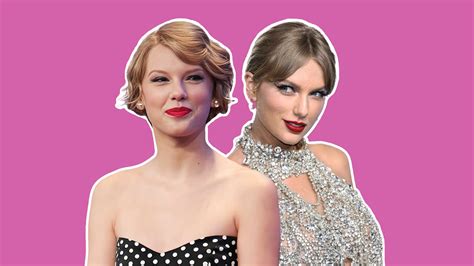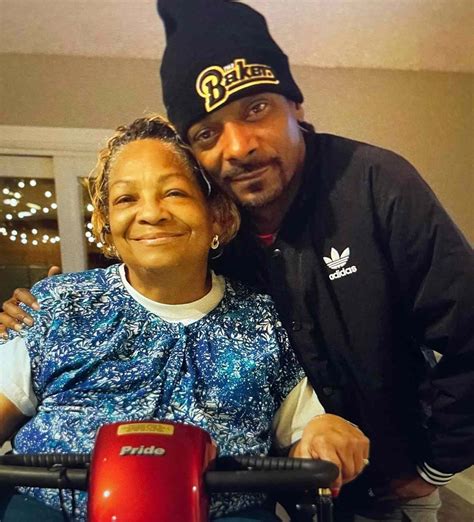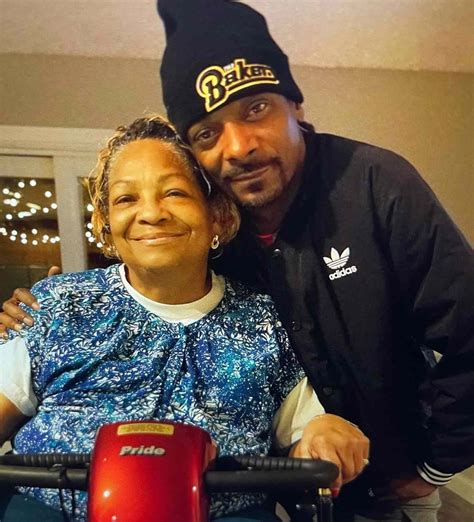
Taylor Swift’s appearance in photos purportedly from a friend’s wedding has ignited a flurry of online speculation about possible plastic surgery, triggering a mixed reaction from fans and critics alike. The photos, which circulated widely across social media platforms, prompted discussions ranging from supportive affirmations of Swift’s choices to harsh criticisms and accusations of setting unrealistic beauty standards.
The images, allegedly taken at a recent wedding celebration, feature Swift alongside other attendees. While the source of the photos remains unconfirmed, their rapid dissemination has fueled intense scrutiny of Swift’s facial features, leading to claims of procedures such as Botox injections, fillers, or other cosmetic enhancements. According to Yahoo Entertainment, which initially reported on the controversy, the online commentary underscores ongoing debates about celebrity culture, body image, and the pressures faced by women in the public eye.
The uproar began shortly after the images surfaced, with fans and detractors alike flocking to platforms like X (formerly Twitter), Instagram, and TikTok to express their views. Some fans staunchly defended Swift, emphasizing her right to make personal choices about her appearance and criticizing the judgmental nature of the commentary. Others suggested that changes in Swift’s appearance could be attributed to natural aging, makeup techniques, or simple weight fluctuation. However, a significant portion of online users voiced concerns about the potential influence of Swift’s alleged cosmetic surgery on her younger fans, arguing that it could contribute to body image issues and the normalization of unattainable beauty standards.
One X user wrote, “It’s her body, her choice. People need to back off and let her live her life,” reflecting a common sentiment among Swift’s defenders. Conversely, another user commented, “As a role model, she has a responsibility to be transparent about these things. This is damaging to young women.” The contrasting opinions highlight the complex and often contradictory expectations placed on female celebrities in the modern media landscape.
Yahoo Entertainment noted that this is not the first time Swift’s appearance has been subject to public debate. Over the years, various aspects of her physique and style have been scrutinized, often sparking similar discussions about body image and the pressures of fame. However, the current controversy appears to have struck a particularly sensitive nerve, possibly due to the perceived secrecy surrounding the alleged procedures and the potential implications for Swift’s influence on her fanbase.
The debate surrounding Swift’s alleged plastic surgery also touches upon broader cultural anxieties about aging and beauty standards. In an industry that often prioritizes youth and physical perfection, many celebrities face immense pressure to maintain a certain image, leading some to pursue cosmetic enhancements. This, in turn, can perpetuate unrealistic expectations for the general public, particularly young women who look to celebrities as role models.
“The pressure on female celebrities to maintain a youthful appearance is immense,” said Dr. Emily Carter, a clinical psychologist specializing in body image issues, in an interview unrelated to the Yahoo article but relevant to the situation. “This can lead to a cycle of cosmetic procedures that ultimately contributes to a culture of self-criticism and dissatisfaction.”
The controversy surrounding Swift’s alleged plastic surgery serves as a stark reminder of the challenges faced by celebrities in the digital age, where every aspect of their lives is subject to public scrutiny and judgment. It also underscores the importance of promoting body positivity and realistic beauty standards in a society that often prioritizes superficial appearances. As the debate continues to unfold, it remains to be seen whether Swift will address the rumors directly or continue to navigate the pressures of fame in her own way. The absence of any official statement from Swift or her representatives has only fueled further speculation and conjecture.
Further complicating the matter is the lack of verifiable evidence. The photos themselves have not been officially authenticated, and there is no concrete proof that Swift has undergone any cosmetic procedures. This hasn’t stopped countless social media users and even some media outlets from analyzing the images in minute detail, comparing them to older photos of Swift and pointing out perceived differences in her facial features.
One popular TikTok video, viewed millions of times, features a side-by-side comparison of Swift’s appearance at the 2024 Grammy Awards and the purported wedding photos. The video creator, who claims to have a background in cosmetic surgery analysis (though this claim is unverifiable), highlights subtle changes in Swift’s cheekbones, jawline, and brow area, suggesting possible filler injections and Botox treatments. While the video is presented as an objective analysis, it is important to note that such assessments are often subjective and prone to bias.
The controversy also raises ethical questions about the media’s role in perpetuating unrealistic beauty standards. By focusing on Swift’s alleged plastic surgery, some critics argue that the media is contributing to a culture of body shaming and reinforcing the message that women must conform to certain physical ideals in order to be considered beautiful or successful.
“The media has a responsibility to be more mindful of the impact its coverage has on body image,” said Sarah Jones, a media studies professor at the University of California, Los Angeles, in a separate interview concerning media ethics. “By constantly scrutinizing celebrities’ appearances and speculating about their cosmetic procedures, they are sending a message that physical perfection is the ultimate goal.”
The reaction from Swift’s fanbase has been particularly diverse, ranging from unwavering support to disappointment and even anger. Some fans have expressed their disappointment that Swift, who has often been praised for her authenticity and relatability, would allegedly resort to cosmetic surgery. Others have defended her right to make personal choices, arguing that she is under no obligation to live up to their expectations.
“I’m a little disappointed, to be honest,” wrote one fan on a Swift-dedicated online forum. “I always admired Taylor for being so natural and authentic. It’s sad to see her potentially giving in to the pressures of Hollywood.”
Another fan responded, “She’s a grown woman who can do whatever she wants with her body. People need to stop judging her and let her live her life.”
The debate surrounding Swift’s alleged plastic surgery is unlikely to subside anytime soon. As long as the photos continue to circulate and the media continues to cover the controversy, the discussion about body image, beauty standards, and the pressures faced by female celebrities will continue to rage on. The episode highlights the intense scrutiny celebrities face and the fine line between personal choice and public perception. It also underscores the pervasive influence of social media in shaping public discourse and the challenges of navigating the complex relationship between fame, beauty, and self-esteem.
The implications of this controversy extend beyond Swift’s personal life and career. It serves as a case study in how social media can amplify and distort perceptions of beauty, and how easily rumors and speculation can spread in the digital age. It also highlights the need for greater media literacy and critical thinking skills, so that individuals can make informed judgments about the information they consume online. Ultimately, the controversy surrounding Swift’s alleged plastic surgery is a reflection of broader societal anxieties about aging, beauty, and the pressures of fame. It is a complex issue with no easy answers, and it is likely to continue to be debated for years to come.
The situation also sheds light on the psychological toll that fame can take on individuals. Celebrities are constantly under scrutiny, and their every move is analyzed and dissected by the media and the public. This can lead to feelings of anxiety, insecurity, and self-doubt, which may contribute to the decision to undergo cosmetic procedures.
Dr. Carter added, “It’s important to remember that celebrities are human beings too. They are not immune to the pressures of society and the unrealistic expectations that are placed upon them. We need to be more compassionate and understanding of the challenges they face.”
The lack of a definitive statement from Swift’s camp only adds fuel to the fire. An official denial or explanation could potentially quell the rumors, but silence allows the speculation to continue unabated. This strategic choice, or lack thereof, is common among celebrities who often prefer to avoid directly addressing controversial topics, fearing that any response could further amplify the negative attention.
The long-term impact of this controversy on Swift’s image and career remains to be seen. While some fans may be disillusioned by the allegations, others are likely to remain loyal and supportive. However, the episode serves as a reminder that even the most successful and beloved celebrities are not immune to criticism and scrutiny.
The controversy also highlights the evolving nature of beauty standards in the digital age. While traditional media outlets still play a role in shaping perceptions of beauty, social media platforms have become increasingly influential. This has led to a proliferation of filters and editing tools that allow individuals to alter their appearance and present an idealized version of themselves online. This, in turn, can contribute to feelings of inadequacy and body dissatisfaction, particularly among young people.
The debate surrounding Swift’s appearance is a microcosm of a larger societal conversation about the pressures of conformity and the pursuit of perfection. It is a conversation that needs to continue, with a focus on promoting body positivity, self-acceptance, and critical thinking skills.
Finally, it’s important to note the potential for this controversy to have a positive impact. By sparking a wider discussion about body image and beauty standards, it could encourage individuals to be more critical of the images they consume online and to challenge the unrealistic expectations that are often placed upon women. It could also lead to greater empathy and understanding for the challenges faced by celebrities and other public figures.
While the controversy surrounding Taylor Swift’s alleged plastic surgery is undoubtedly a complex and sensitive issue, it also presents an opportunity for growth and positive change. By engaging in thoughtful and respectful dialogue, we can work towards creating a more inclusive and accepting society where individuals are valued for who they are, rather than how they look. The pervasive nature of the internet and the speed at which information spreads make it imperative that individuals develop the ability to discern fact from fiction and to engage with media critically.
The situation underscores the urgent need for comprehensive media literacy education, particularly for young people who are most susceptible to the influence of social media and celebrity culture. By equipping individuals with the skills to analyze and evaluate information, we can empower them to make informed decisions about their own lives and to resist the pressures of conformity.
Moreover, the controversy highlights the importance of promoting diversity and inclusivity in the media. By showcasing a wider range of body types, ethnicities, and ages, we can challenge traditional beauty standards and create a more representative and equitable society. This requires a concerted effort from media outlets, advertisers, and other stakeholders to prioritize diversity and inclusion in their content and hiring practices.
In conclusion, the controversy surrounding Taylor Swift’s alleged plastic surgery is a multifaceted issue with far-reaching implications. It is a reflection of broader societal anxieties about aging, beauty, and the pressures of fame, and it underscores the urgent need for greater media literacy, body positivity, and diversity in the media. By engaging in thoughtful and respectful dialogue, we can work towards creating a more inclusive and accepting society where individuals are valued for who they are, rather than how they look. The episode serves as a potent reminder of the power of media and the responsibility that comes with wielding it. It also highlights the resilience and adaptability required to navigate the complexities of modern celebrity.
The controversy also brings to light the growing trend of “de-influencing,” where individuals on social media actively discourage the purchase of certain products or the adoption of certain trends. This movement is often motivated by a desire to promote more sustainable consumption habits and to challenge the relentless marketing tactics of corporations. In the context of Swift’s alleged plastic surgery, de-influencing could manifest as a rejection of the pressure to conform to unrealistic beauty standards and a celebration of natural beauty.
The potential for a backlash against cosmetic procedures among younger generations is a significant development. As awareness of the negative impacts of social media and celebrity culture grows, more individuals are choosing to embrace their natural appearance and to prioritize self-acceptance over external validation. This shift in attitude could have a profound impact on the beauty industry and on the broader culture of consumerism.
The Swift controversy also serves as a reminder of the importance of critical self-reflection. It is easy to judge and criticize others, but it is more challenging to examine our own biases and assumptions. By engaging in honest self-assessment, we can become more aware of the ways in which we perpetuate harmful stereotypes and contribute to a culture of negativity.
Finally, the episode highlights the power of individual agency. While it is important to acknowledge the pressures that celebrities face, it is also important to recognize that they have the power to shape their own narratives and to use their platforms to promote positive change. Whether Swift chooses to address the allegations directly or to remain silent, her actions will have a significant impact on her fans and on the broader public. The way she navigates this controversy will be closely watched and analyzed for years to come. It’s a complex situation with no easy answers, but it offers an opportunity for learning, growth, and positive change. The ultimate takeaway is that the conversation surrounding beauty and self-image needs to be ongoing and multifaceted, encompassing not only personal choices but also the societal pressures that influence them.
Frequently Asked Questions (FAQ)
- What sparked the plastic surgery rumors surrounding Taylor Swift?
The rumors began after photos purportedly from a friend’s wedding circulated online, showing Swift’s appearance which some social media users claimed indicated she had undergone cosmetic procedures. Changes in her facial features, such as her cheekbones, jawline, and brow area, were cited as evidence.
- Has Taylor Swift confirmed or denied having plastic surgery?
As of the latest reports, neither Taylor Swift nor her representatives have made any official statement confirming or denying the rumors. This silence has contributed to the ongoing speculation and debate.
- What are some of the arguments made by fans who support Taylor Swift in this situation?
Supporters argue that Swift has the right to make personal choices about her body and appearance. They criticize the judgmental nature of the commentary and suggest that changes in her appearance could be due to natural aging, makeup techniques, or weight fluctuations.
- What are the concerns raised by those who are critical of Taylor Swift’s alleged plastic surgery?
Critics express concerns about the potential influence on Swift’s younger fans, arguing that it could contribute to body image issues and the normalization of unattainable beauty standards. Some believe that as a role model, she has a responsibility to be transparent about such procedures.
- What broader issues does this controversy highlight?
The controversy highlights broader cultural anxieties about aging, beauty standards, and the pressures faced by women in the public eye. It also underscores the challenges celebrities face in the digital age, where every aspect of their lives is subject to public scrutiny and judgment.









